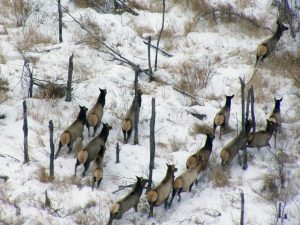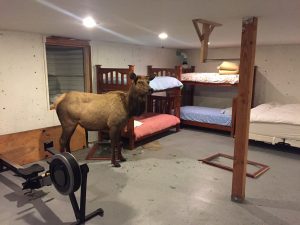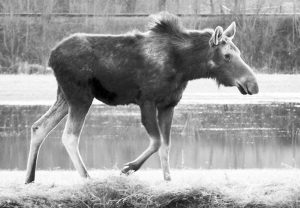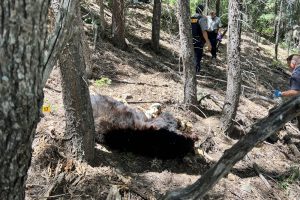Minnesota’s elk range in northwestern Minnesota has three herds with a total of 79 elk, according to the annual aerial elk population survey completed by the Department of Natural Resources in Kittson, Marshall and Roseau counties. Past surveys recorded 83 elk in 2016 and 131 in 2015.
“The variability we’re seeing in these numbers year to year is due mainly to the movement of the Caribou-Vita herd that travels back and forth across the Minnesota-Manitoba border,” said John Williams, DNR northwest region wildlife manager.
“However, we are concerned about declining numbers of elk in the Grygla herd in Marshall County,” Williams said. “This herd hasn’t been hunted since 2012, yet the population continues to trend downward.”
In Marshall County, observers counted 17 elk in the Grygla herd, down from the 21 counted last year and 18 in 2015. The current population goal for the Grygla herd is 30 to 38 elk.
Aerial surveys are a snapshot in time, meaning they are only an estimate of the population, not an exact number. The DNR counts elk only on the Minnesota side during its aerial surveys.
This year, the DNR conducted a joint aerial elk survey with Manitoba, which was completed on Feb. 21 and Feb. 22 for the areas close to the border. Manitoba wildlife staff counted 108 elk near the border and 55 slightly north of Vita, Manitoba, totaling 163 animals on the Canadian side of the border. The Caribou-Vita herd is Minnesota’s largest herd, with a current population goal of 150 to 200 elk inhabiting both sides of the border.
Depending on the year and day of the survey, elk numbers on the Minnesota side can greatly vary. Observers counted only one elk this year in Minnesota in the Caribou-Vita herd. Ten animals were counted in 2016 and 79 in 2015.
“Our observers saw many elk tracks near the border during the survey on Feb. 21, and although they saw only one elk, we suspected the majority of the herd was in Manitoba,” Williams said. “This was confirmed by the results of the Manitoba aerial elk survey conducted on Feb. 22.”
Another herd, the Kittson-Central herd, is located near Lancaster in Kittson County. Observers counted 61 elk compared to 52 in 2016 and 34 in 2015. This year’s count is just above the current population goal of 50 to 60 animals.
In 2016, the DNR radio-collared 20 cow elk in Minnesota’s three herds to begin research into elk movements and habitat use that should help managers improve the effectiveness of elk population surveys, the knowledge of Minnesota elk biology and movements and elk depredation management. The study is being conducted by researchers from the DNR and Minnesota State University-Mankato. It will run through June 2018.
This research project is the first of its kind in Minnesota. The goal is to improve understanding of the species and ultimately develop management programs that benefit elk and their habitat, while also minimizing conflicts with landowners.
Funding for the project was provided by the Minnesota Environment and Natural Resources Trust Fund as recommended by the Legislative-Citizen Commission on Minnesota Resources and approved by the state Legislature. The DNR and the Rocky Mountain Elk Foundation are also providing funding.
The preceding is a release from the Minnesota Department of Natural Resources.




